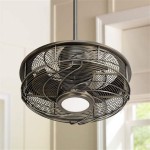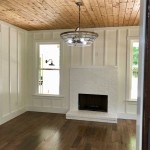Should Walls and Ceilings Be Painted the Same Color?
The question of whether walls and ceilings should share the same paint color is a common one in interior design. There is no single correct answer, as the decision depends heavily on the specific characteristics of the room, the desired aesthetic, and the overall goals of the design. Painting ceilings and walls the same color can offer several advantages, but it's crucial to understand the implications and consider alternative approaches before committing to a single hue.
Traditionally, ceilings were often painted white, a practice rooted in functionality and aesthetics. White ceilings reflect light, brightening the room and making it feel more spacious. This was particularly important in older homes with smaller windows and less natural light. A white ceiling also created a visually neutral plane, allowing the walls and furnishings to take center stage. However, modern design trends are increasingly challenging these conventions, exploring the potential of color to create unique and impactful spaces.
Therefore, a thorough evaluation of the room and the desired effect is paramount before making a decision about the ceiling color. Factors such as room size, natural light availability, architectural features, and personal preferences all play a significant role in determining the optimal approach.
Creating a Sense of Cohesion and Expanding the Space
One of the primary benefits of painting walls and ceilings the same color is the creation of a unified and cohesive space. By eliminating the visual break between the wall and the ceiling, the room can feel larger and more open. This is particularly effective in smaller rooms or rooms with lower ceilings, where a contrasting ceiling color can emphasize the limited height and make the space feel cramped. When the same color flows seamlessly from wall to ceiling, it blurs the boundaries and creates an illusion of expanded space. This technique is often employed in minimalist designs where simplicity and uninterrupted visual flow are key objectives.
Furthermore, using the same color can simplify the design process. Coordinating different shades or tones can be challenging, especially for individuals without extensive design experience. By opting for a single color, the risk of clashing colors is eliminated, and the decorating process becomes more streamlined. This approach can also be cost-effective, as it reduces the need to purchase multiple paint colors and minimizes the potential for wasted paint.
The effectiveness of this technique depends largely on the chosen color. Lighter, neutral colors such as off-white, cream, or light gray are generally more successful in creating a sense of spaciousness. These colors reflect light effectively, making the room feel brighter and airier. Darker colors, while capable of creating a dramatic and intimate atmosphere, can also make a room feel smaller and more enclosed, particularly when used on both the walls and the ceiling.
Another factor to consider is the finish of the paint. Different finishes reflect light differently, which can impact the overall appearance of the room. For example, a matte finish will absorb light, creating a softer and more muted effect, while a glossy finish will reflect light, making the room feel brighter and more vibrant. When painting walls and ceilings the same color, it's important to choose a finish that complements the color and achieves the desired aesthetic.
Highlighting Architectural Details or Creating a Statement
While a unified color scheme can be effective in creating a sense of cohesion, contrasting colors can be used to highlight architectural details or create a statement. For example, if a room has intricate crown molding or a coffered ceiling, painting these features a different color can draw attention to their beauty and craftsmanship. A contrasting ceiling color can also be used to create a focal point in the room, adding visual interest and depth.
In rooms with high ceilings, a darker ceiling color can help to visually lower the ceiling and create a more intimate atmosphere. This technique is often used in large, open spaces to make them feel more comfortable and inviting. Conversely, painting a low ceiling a lighter color than the walls can make it appear higher, creating a sense of spaciousness.
When choosing contrasting colors, it's important to consider the overall color scheme of the room. The colors should complement each other and create a harmonious balance. Using a color wheel can be helpful in selecting colors that work well together. Analogous colors, which are located next to each other on the color wheel, create a harmonious and calming effect, while complementary colors, which are located opposite each other on the color wheel, create a vibrant and energetic effect.
The use of contrasting colors can also be an effective way to define different zones within a room. For example, in an open-plan living area, painting the ceiling a different color above the dining area can help to visually separate it from the living area. This technique can be particularly useful in small spaces where it's important to maximize functionality and create a sense of order.
Addressing Practical Considerations: Light, Imperfections, and Room Use
Beyond aesthetics, practical considerations also play a crucial role in determining whether walls and ceilings should be painted the same color. The amount of natural light in a room, the presence of imperfections on the ceiling, and the intended use of the room all influence the optimal color choice.
Rooms with limited natural light benefit from lighter colors, which reflect light and brighten the space. Painting both the walls and ceiling a light color can maximize the available light and create a more cheerful and inviting atmosphere. Conversely, in rooms with an abundance of natural light, darker colors can be used without making the space feel too small or enclosed. However, even in well-lit rooms, it's important to consider the effect of the color on the overall mood and atmosphere.
Existing imperfections on the ceiling, such as cracks, stains, or uneven surfaces, can be further accentuated by certain paint colors and finishes. High-gloss finishes, in particular, tend to highlight imperfections, making them more noticeable. Matte finishes, on the other hand, can help to conceal imperfections by absorbing light. When painting a ceiling with imperfections, it's often advisable to choose a matte finish and a lighter color that will minimize their appearance. Preparing the ceiling properly by patching cracks and sanding uneven surfaces can also improve the final result.
The intended use of the room also influences the optimal color choice. Bedrooms, for example, are often painted in calming and relaxing colors such as blues, greens, or grays. Kitchens and bathrooms, on the other hand, may benefit from brighter and more energizing colors such as yellows or oranges. When painting walls and ceilings the same color, it's important to choose a color that is appropriate for the function of the room and that creates the desired atmosphere.
Furthermore, consider the existing furnishings and décor in the room. The paint color should complement the furniture, textiles, and accessories, creating a cohesive and harmonious look. Before committing to a particular color, it's helpful to test it out in the room by painting a small area and observing how it looks in different lighting conditions. Paint colors can appear different depending on the time of day and the type of lighting used in the room. This step is crucial in ensuring satisfaction with the final result.
Ultimately, the decision of whether to paint walls and ceilings the same color is a matter of personal preference and depends on the specific characteristics of the room and the desired aesthetic. By carefully considering the factors outlined above, it is possible to make an informed decision that will enhance the beauty and functionality of the space.

Should I Paint My Ceiling And Walls The Same Color Branson Company

Should You Paint Your Ceiling The Same Color As Walls A House In Hills
Walls Mouldings And Ceilings All The Same Color My Fave Trend Designed

Rules For Painting Ceilings Should Walls Be The Same Color Paintrite Pros

Painting Your Ceiling The Same Color As Walls Ondemand Painters

Should I Paint My Ceilings The Same Color As Interior Walls Matt Painter

To Match Or Not Deciding On Wall And Ceiling Colors

Painting Walls And Ceiling The Same Color Pros Cons

Paint The Ceiling Same As Wall Color Decorologist

Should I Paint My Ceilings The Same Color As Walls
Related Posts








